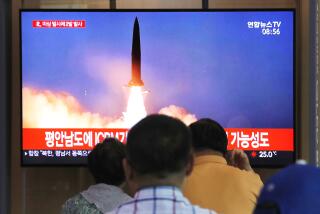Report Links Nuclear Tests, Cancer
- Share via
WASHINGTON — A draft report that estimated 11,000 people died from cancers related to nuclear testing during the Cold War was well done and should be published, the National Research Council said Tuesday.
The study, by the Centers for Disease Control and Prevention and the National Cancer Institute, concluded that radioactive fallout from Cold War nuclear testing exposed virtually everyone in the United States to radiation and contributed to the cancer deaths.
The study, which became public in March, has not been formally published. It is the first to consider the health effects of nuclear detonations, including those done by foreign countries.
The institute suggested that the CDC reanalyze public exposure to iodine-131, which can cause thyroid cancer, in light of new information obtained by studying the Chernobyl nuclear accident in Russia.
But the institute said the full report’s publishing should not be delayed during the reanalysis.
“The recommended reanalysis of iodine-131 exposure is unlikely to make large changes in the key results, but it will make the risk estimates current and hence more credible,” said William Schull, chairman of the committee that wrote the Research Council report. Schull is a professor emeritus at the University of Texas, Houston.
A 1997 assessment by the National Cancer Institute found that 11,300 to 212,000 thyroid cancers could have been caused by iodine-131 produced in nuclear explosions at the Nevada Test Site. The CDC research does not challenge that result and suggests iodine-131 fallout is responsible for almost all illness resulting from nuclear testing.
The number of cancer cases attributable to nuclear testing is small, relative to other causes. For example, among the 3.8 million Americans born in 1951, who would have been exposed to the highest fallout levels in their most vulnerable early years, testing is expected to account for an estimated 1,000 additional cancer deaths. Smoking, in comparison, is expected to account for about 250,000 cancer deaths in the same group.
More to Read
Sign up for Essential California
The most important California stories and recommendations in your inbox every morning.
You may occasionally receive promotional content from the Los Angeles Times.













